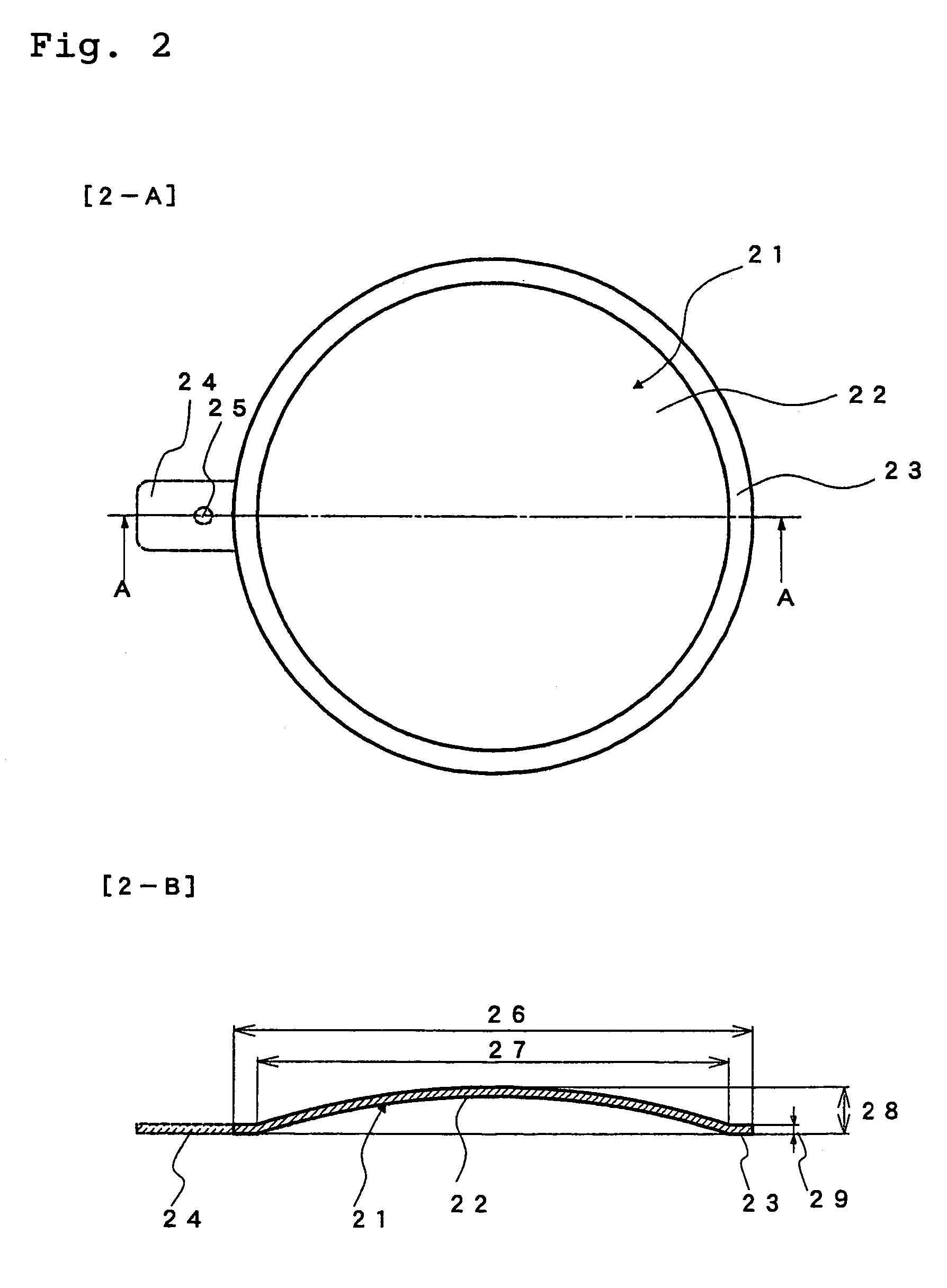Polycarbonate resin composition, pellets thereof and molded article thereof
a polycarbonate resin and composition technology, applied in the direction of synthetic resin layered products, packaging, transportation and packaging, etc., can solve the problems of increasing cracking, molded articles are liable either to have internal strain or to undergo cracking, and it is difficult to obtain excellent mold releasing properties
- Summary
- Abstract
- Description
- Claims
- Application Information
AI Technical Summary
Benefits of technology
Problems solved by technology
Method used
Image
Examples
first embodiment
[0061]The first embodiment of the present invention is a polycarbonate resin composition obtained by blending 100 parts by weight of a polycarbonate resin (Component A) and 0.005 to 2 parts by weight of a full ester (Component B) from an aliphatic polyhydric alcohol having 4 to 8 hydroxyl groups and 5 to 30 carbon atoms and an aliphatic carboxylic acid having 10 to 22 carbon atoms, said Component B having a 5% weight loss temperature, measured by TGA (thermogravimetric analysis), of 250 to 360° C. and having an acid value of 4 to 20.
(Polycarbonate Resin: Component A)
[0062]The polycarbonate resin for use as Component A in the present invention is a product obtained by reacting a dihydric phenol with a carbonate precursor. Examples of the method of the above reaction include an interfacial polymerization method, a molten ester exchange method, a solid phase ester exchange method of a carbonate prepolymer, and a ring-opening polymerization method of a cyclic carbonate compound.
[0063]Ty...
second embodiment
[0165]Since the fatty acid full ester as Component B in the present invention contains the ester compound as a main component and the free aliphatic carboxylic acid as an auxiliary component as described already, the polycarbonate resin composition of the present invention can be also said to be a resin composition comprising these two compounds. From the above viewpoint, therefore, there is also provided the following second embodiment of the resin composition. That is, the second embodiment of the present invention is a polycarbonate resin composition comprising 100 parts by weight of a polycarbonate resin (Component A) and 0.005 to 2 parts by weight of a full ester (Component B) from an aliphatic polyhydric alcohol having 4 to 8 hydroxyl groups and 5 to 30 carbon atoms and an aliphatic carboxylic acid having 10 to 22 carbon atoms, the polycarbonate resin composition being a composition in which the molar ratio (Ff:Fe) of the molar amount (Ff) of carboxyl groups of free aliphatic ...
third embodiment
[0170]The polycarbonate resin composition of the present invention gives pellets suitable for a transparent member for an automobile by accomplishing the object of the present invention on the basis of the above embodiment. According to the present invention, therefore, there is provided the following second embodiment of the resin composition. That is, the third embodiment of the present invention is directed to pellets formed of a resin composition comprising 100 parts by weight of a polycarbonate resin (Component A) and 0.005 to 2 parts by weight of a full ester (Component B) from an aliphatic polyhydric alcohol having 4 to 8 hydroxyl groups and 5 to 30 carbon atoms and an aliphatic carboxylic acid having 10 to 22 carbon atoms,
[0171]wherein said pellets satisfy the requirement that the mold release load of said pellets in a mold release load measurement method is 85% or less of the mold release load, measured by said measurement method, of pellets formed from a resin composition ...
PUM
| Property | Measurement | Unit |
|---|---|---|
| weight loss temperature | aaaaa | aaaaa |
| weight loss temperature | aaaaa | aaaaa |
| Ra | aaaaa | aaaaa |
Abstract
Description
Claims
Application Information
 Login to View More
Login to View More - R&D
- Intellectual Property
- Life Sciences
- Materials
- Tech Scout
- Unparalleled Data Quality
- Higher Quality Content
- 60% Fewer Hallucinations
Browse by: Latest US Patents, China's latest patents, Technical Efficacy Thesaurus, Application Domain, Technology Topic, Popular Technical Reports.
© 2025 PatSnap. All rights reserved.Legal|Privacy policy|Modern Slavery Act Transparency Statement|Sitemap|About US| Contact US: help@patsnap.com



